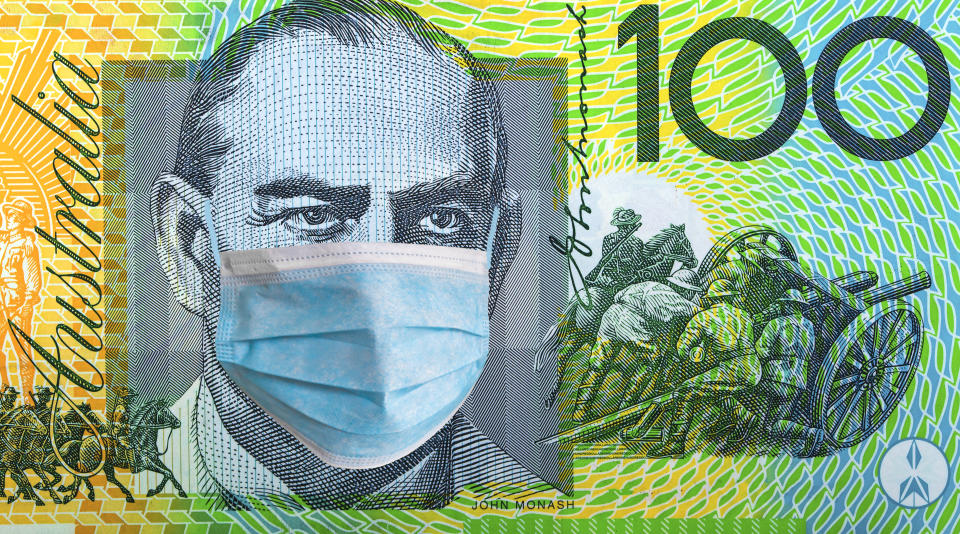RBA kicks off quantitative easing program: Here's what that actually means

The Reserve Bank of Australia (RBA) has pulled the lever on a $100 billion quantitative easing program after months of playing around the sidelines.
Quantitative easing is a tactic used by central banks to inject money into the economy, to encourage spending and investing.
Also read: RBA cuts interest rates to 0.10%: What will happen to your savings?
Also read: House prices predicted to soar after RBA’s ‘historic’ cut
The decision came after the RBA pulled interest rates down to their lowest ever at 0.10 per cent, effectively taking the wind power out of the central bank’s interest rates lever.
Under the quantitative easing program, the RBA will begin to buy $100 billion in government bonds with five to 10 years maturity over the coming six months.
Wait - what is quantitative easing and how does it work?
Quantitative easing is considered an unconventional monetary policy that is often dubbed “money printing”, but it’s a bit more complicated than that.
The mechanics behind quantitative easing involve the manipulation of interest rates through the purchase of government bonds.
A bond is basically a loan that an investor will pay for before receiving a payment at a predetermined rate at the end of the term, or maturity.
Government bonds are considered safe assets as governments generally don’t go bankrupt.
By purchasing these government bonds from investors like banks, investment managers and super funds, the central bank injects money into the Australian finance sector which helps banks build up their capital.
The idea is that by buying more government bonds, the RBA will continue to push interest rates so low and flood the market with so much cash that other lenders will decide that they are better off lending to consumers and businesses.
As Market Economics managing director Stephen Koukoulas summarised, if you were to find $1 on the road, you’d probably put it in your pocket and forget about it. But if you found $1,000 on the road, you’d probably spend some of it. In this scenario, the RBA is putting the money on the road and the banks are the ones dishing it out in loans, while investment funds are spending it on investments.
What does it mean that the RBA is doing it now?
While quantitative easing is new for Australia, it’s not new internationally.
The Global Financial Crisis pushed the European Central Bank, the Bank of Japan, the US Federal Reserve and the Bank of England among others to explore the policy as their interest rates fell to zero.
“Australia was in the fortunate position where during the GFC we were benefiting from the China boom, so we hadn’t needed to cut our interest rates until now,” AMP Capital senior economics Diana Mousina said.
Until now, quantitative easing worked in the US, UK and Europe to reduce unemployment and to boost economic growth.
“Obviously the central banks haven’t been able to generate the increases in inflation that the central banks wanted, but it has benefited the economy. People debate the merits of how much quantitative easing has done, and some people argue that it’s only pushed up the value of the share market and different asset prices, but I think it’s still worked well to stimulate the economy.”
Koukoulas agreed, noting that while the policy is far from a “cure all”, it’s another step in building the economy towards a recovery.
He said that when quantitative easing was introduced in the US, it fuelled a strong recovery.
“There’s not a one-to-one correlation between the two [things], but when we look back at the US economy in 2010, 2011 and 2012, it recorded pretty strong economic growth,” he said.
“It certainly helped.”
Are we looking at negative rates next?
The quantitative easing program is likely to remain well into next year and perhaps longer.
Beyond that, the question is, “What next?”
Both Mousina and Koukoulas believe a descent into negative rates is unlikely.
“What’s important to keep in mind is that this type of asset purchase program is… another form of reducing interest rates in the economy, so it’s not something that people should be worried about,” Mousina said.
“I don’t think we’re going to go down the path of negative interest rates, which a lot of people get concerned about.”
Koukoulas said the RBA and the Government will need to get inventive if the economy refuses to lift within a few months.
“If we find that in the next two, three, four months that the economic recovery is pretty tepid, unemployment still elevated, wages growth is still around 1 per cent or thereabouts, the pressure will be on fiscal policy,” Koukoulas said.
The Government will need to rethink its withdrawal of the JobKeeper stimulus and also consider policies like free childcare and another tax shake-up to inject more energy into the economy.
But in terms of the RBA, Koukoulas said that while the RBA is not contemplating negative rates, it hasn’t ruled it out.
“So does the Reserve Bank have to join that negative interest rate party? There are some huge issues with that, but a lot of central banks have done it and they’re still alive to tell the tale.”
Want to get better with money and investing in 2021? Sign up here to our free newsletter and get the latest tips and news straight to your inbox.

 Yahoo Finance
Yahoo Finance 
